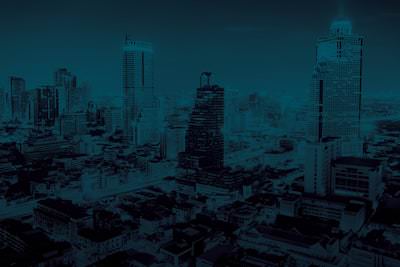The last year proves beyond a doubt that emergencies and events outside of the normally accepted parameters of risk do occur. This is why a business needs a continuity plan, however, Gartner’s Business Continuity Survey in 2020 indicated that 88% of companies were not prepared for the impact of COVID19.
Covid taught us the importance of a business continuity plan and that businesses can adapt if they are prepared. A plan should help you to keep your business afloat, return to normal after the event, and provide the services and support that underpin everything. And any plan should apply to all aspects of your business including customer service and field commitments – Your customers are hurting at this time and you need to step up because it is a moral responsibility, and because we live in a world now where customer experience has become one of the key differentiators.
If you didn’t have a continuity plan together for your contact centre and customer service before, then it is not too late. Read on to discover the key elements that will help your business overcome any future crisis.
Embrace a Hybrid Model
One of the critical challenges for contact centres from the coronavirus pandemic has been the requirement to work from home. This has meant that contact centres with on-premises solutions had to quickly move to the cloud. Moving forward any continuity plan should take account of that. However, whether the next big crisis is health-related or not, it is still the right way forward to move to a cloud-based solution.
In the event of any crisis, the scalability and flexibility of hosted software enable you to react quicker, reduce costs if appropriate, or deploy a new solution faster. Invariably, adding or reducing staff only requires you to contact your platform provider, it doesn’t require new hardware.
Hosted software also enables you to employ and retain the best staff. This is the case because the enforced period of working from home over the last year has fundamentally changed the attitudes of employees towards the workplace. This is backed up by survey data and from the policies of many major global technology company employers who have switched to offering a hybrid model of working. If you want to get the best staff, it may be essential to offer them homeworking for at least part of the week. Also, it brings many benefits in terms of your ability to pick from a larger talent pool from across the country.
Enshrine Empathy and Safety into Procedures
Even when everyone gets vaccinated, we cannot expect to suddenly forget now more than a year of wearing masks and worrying about the spread of the virus. And in every office, there is likely to be at least one person who lost a loved one and has been deeply scarred by the virus. Employers need to design safety measures that respect and have empathy with employees if there is a return to the office. Equally, they will have customers who are unwilling to call service centres because they are worried about having someone visit their home and they need to do their best to resolve with minimal contact.
Implement the Right Technology
It is not enough to just move to a cloud contact centre solution; businesses need to introduce the communications and collaboration software that makes it seamless to work from home or the office. That is more than just video conferencing software like Zoom or Microsoft Teams it means internal chat, scheduling, and project management software.
In addition, to help with the added security risks around customer data from employees working from home, businesses should employ an employee monitoring and risk detection solution. If not they should at least employee two-factor verification for employee logins.
Remote Visual Assistance software
Remote visual assistance software has proven to be crucial for contact centres in addressing the challenges of solving customer problems with more limited resources and the restriction of not being able to make on-site visits.
It enables a contact centre agent to take over the smartphone of a customer and then use augmented reality to write on the screen and guide the customer to resolve a problem. Before COVID19, it was already being widely adopted, delivering value through resolving customer questions faster and reducing the need for call outs. However, during the pandemic, it has been instrumental in helping field businesses and contact centres to deliver great customer service. Below are some examples:
Building inspections – The continuation of building projects has been crucial for the economy, but the pandemic meant extra rules around inspectors visiting construction sites. By taking over the smartphone of an on-site employee, remote visual assistance has made it possible for inspectors to carry out the appropriate thorough verifications of work and certify safety.
Garages and auto-repair shops – Customers have been able to call a garage and allow a mechanic to examine their car through their smartphone. The mechanic has been able to assess the need for repairs and perhaps coach the customer to fix the problem without needing to go to their garage.
Remote training – Health services and hospitals across the world have been under incredible strain this past year. Remote visual assistance has helped by enabling equipment manufacturers to give timely and detailed explanations of new equipment, reducing the risks of exposure from visits to the hospital.
Travel restrictions – With quarantine in place in many countries across the world, it has not been possible for technicians from the manufacturer to travel to train on the new machinery. They have resolved this by using live video, photo upload, annotations and document sharing to help the buyer install the equipment.
Virtual walk-around – Premise based retail businesses have been struggling because customers are either not permitted to visit or understandably have concerns around safety. In sectors with larger priced and luxury items - for example, cars – some businesses are innovating by offering a virtual tour of the car by using remote virtual assistance.
Other Industries
Remote visual assistance isn’t restricted to the above usage scenarios. Many other sectors use the technology to reduce technician call outs, improve safety and help customers resolve issues faster. For example, housing associations to help with repairs, the energy sector to guide customers through finding boiler serial numbers, telecoms to help with router installation, and electronics retailers to explain unboxing and setup.
The ability for the agent to write on the screen and control the camera means that they can guide the customer through a series of steps to identify the problem. They can then circle the steps on the screen and even send slides or videos to show the customer how to resolve them. The solution even helps when a technician is called to the field as, if it is a particularly complex issue, he can add colleagues to the call to ensure it is resolved the first time.
In addition, for field businesses servicing machinery in the industrial sector the technology has been crucial in helping to deliver on past commitments and new SLA agreements brought about by IoT.














